- Головна
- Готові шкільні презентації
- Презентація на тему «Alfred Tennyson»
Презентація на тему «Alfred Tennyson»
238
Слайд #1
Alfred Tennyson
6 August 1809 – 6 October 1892
6 August 1809 – 6 October 1892
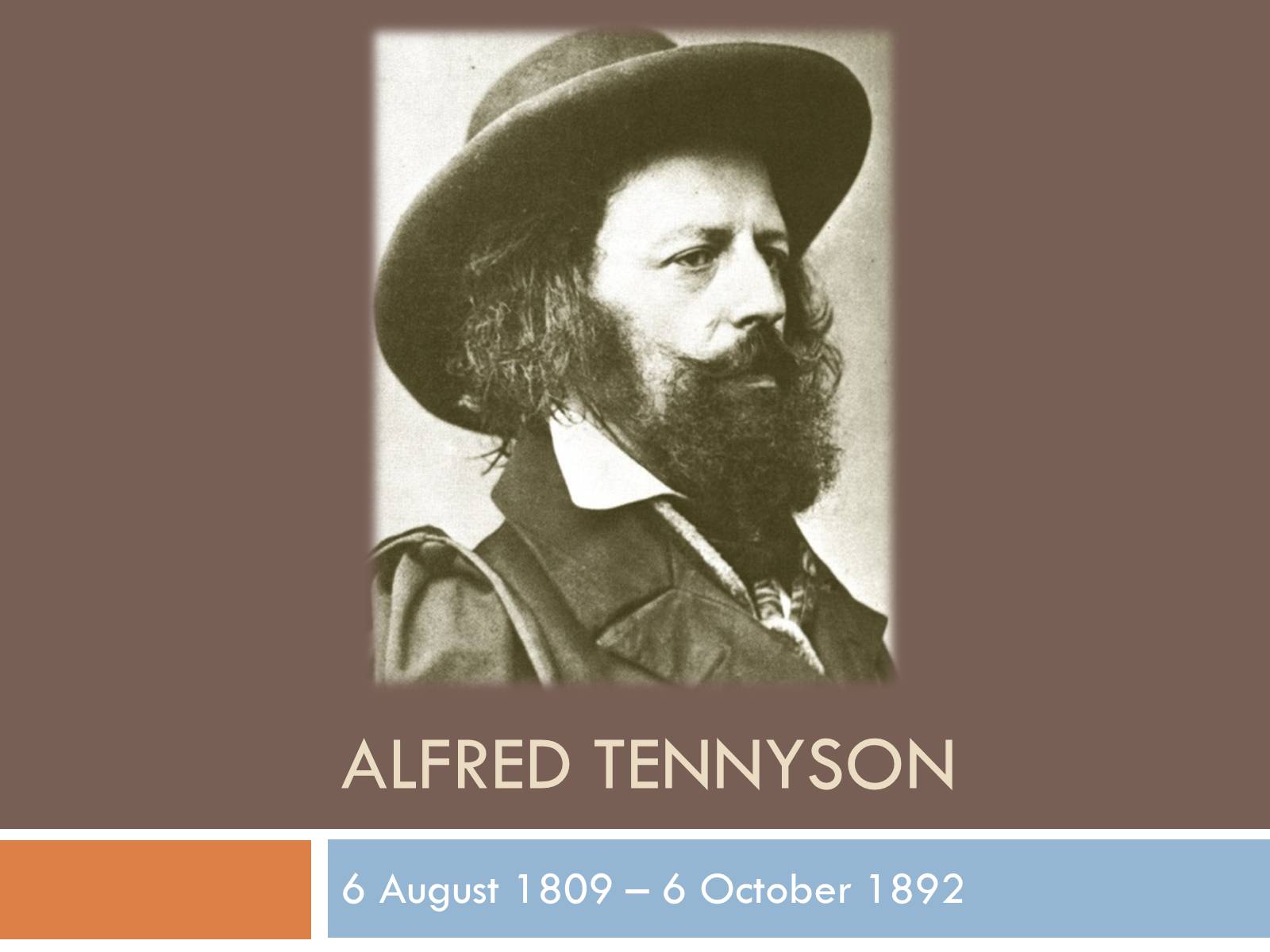
Слайд #2
Alfred Tennyson, 1st Baron Tennyson, FRS was Poet Laureate of Great Britain and Ireland during much of Queen Victoria's reign and remains one of the most popular British poets.
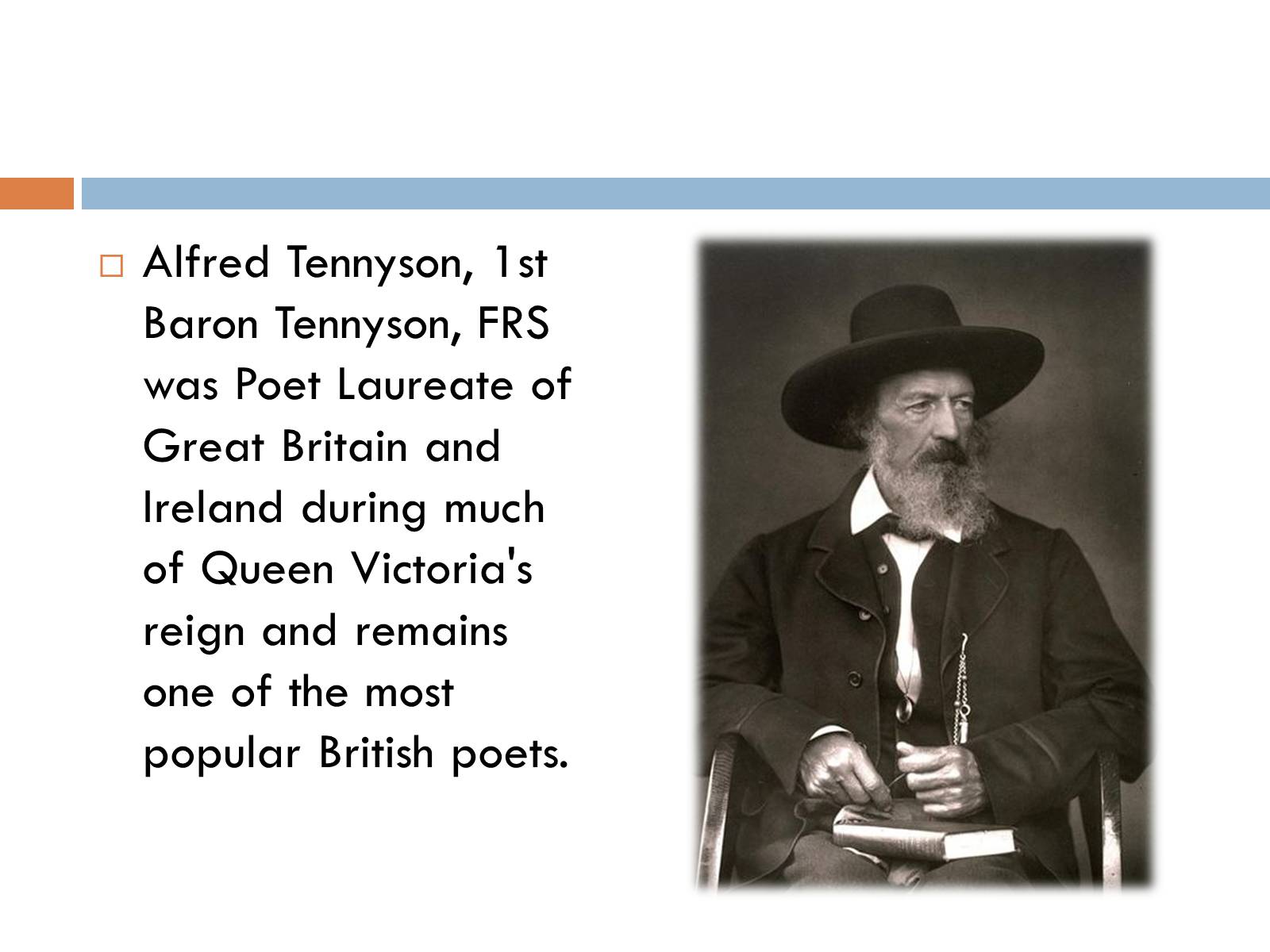
Слайд #3
Tennyson excelled at penning short lyrics, such as "Break, Break, Break", "The Charge of the Light Brigade", "Tears, Idle Tears" and "Crossing the Bar". Much of his verse was based on classical mythological themes. He is the ninth most frequently quoted writer in The Oxford Dictionary of Quotations.
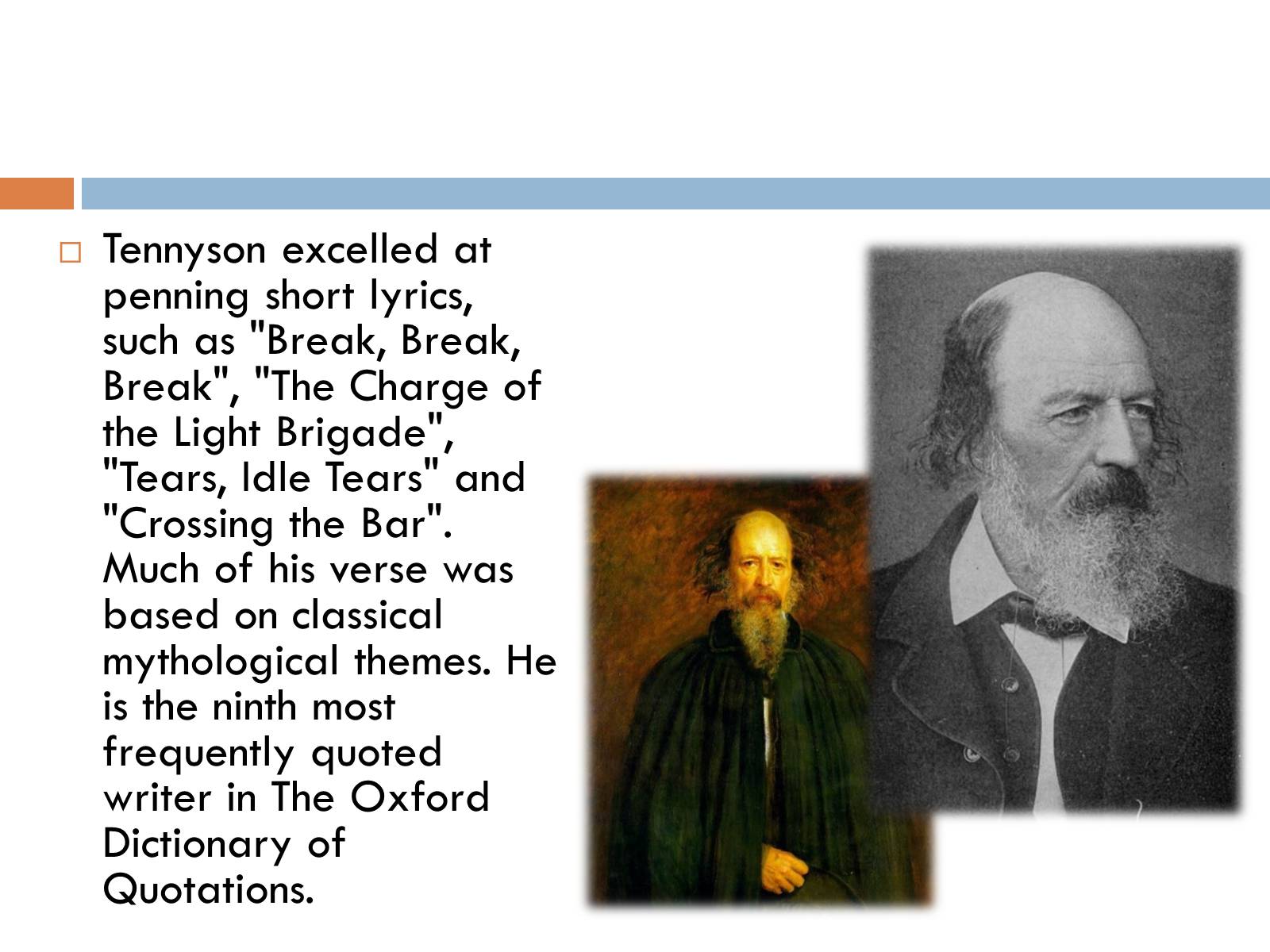
Слайд #4
Tennyson was born in Somersby, Lincolnshire, a rector's son and fourth of 12 children. He derived from a middle-class line of Tennysons, but also had a noble and royal ancestry. Tennyson and two of his elder brothers were writing poetry in their teens, and a collection of poems by all three were published locally when Alfred was only 17. One of those brothers, Charles Tennyson Turner later married Louisa Sellwood, another of Tennyson's brothers, Edward Tennyson, was institutionalised at a private asylum, where he was deemed dead.
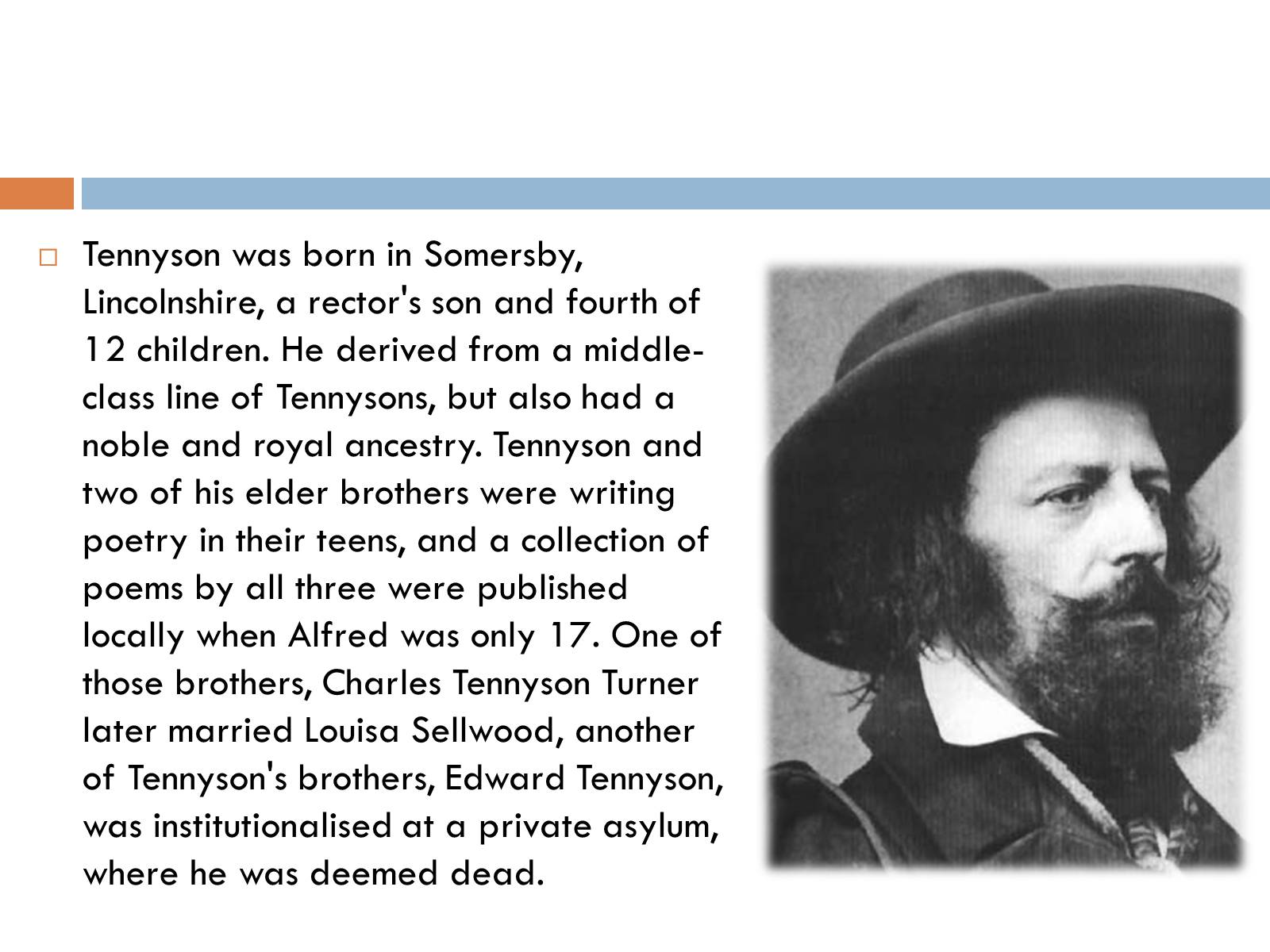
Слайд #5
Tennyson was first a student of Louth Grammar School for four years (1816–1820) and then attended Scaitcliffe School. He entered Trinity College, Cambridge in 1827, where he joined a secret society called the Cambridge Apostles. At Cambridge Tennyson met Arthur Henry Hallam, who became his closest friend. His first publication was a collection of "his boyish rhymes and those of his elder brother Charles" entitled Poems by Two Brothers published in 1827.
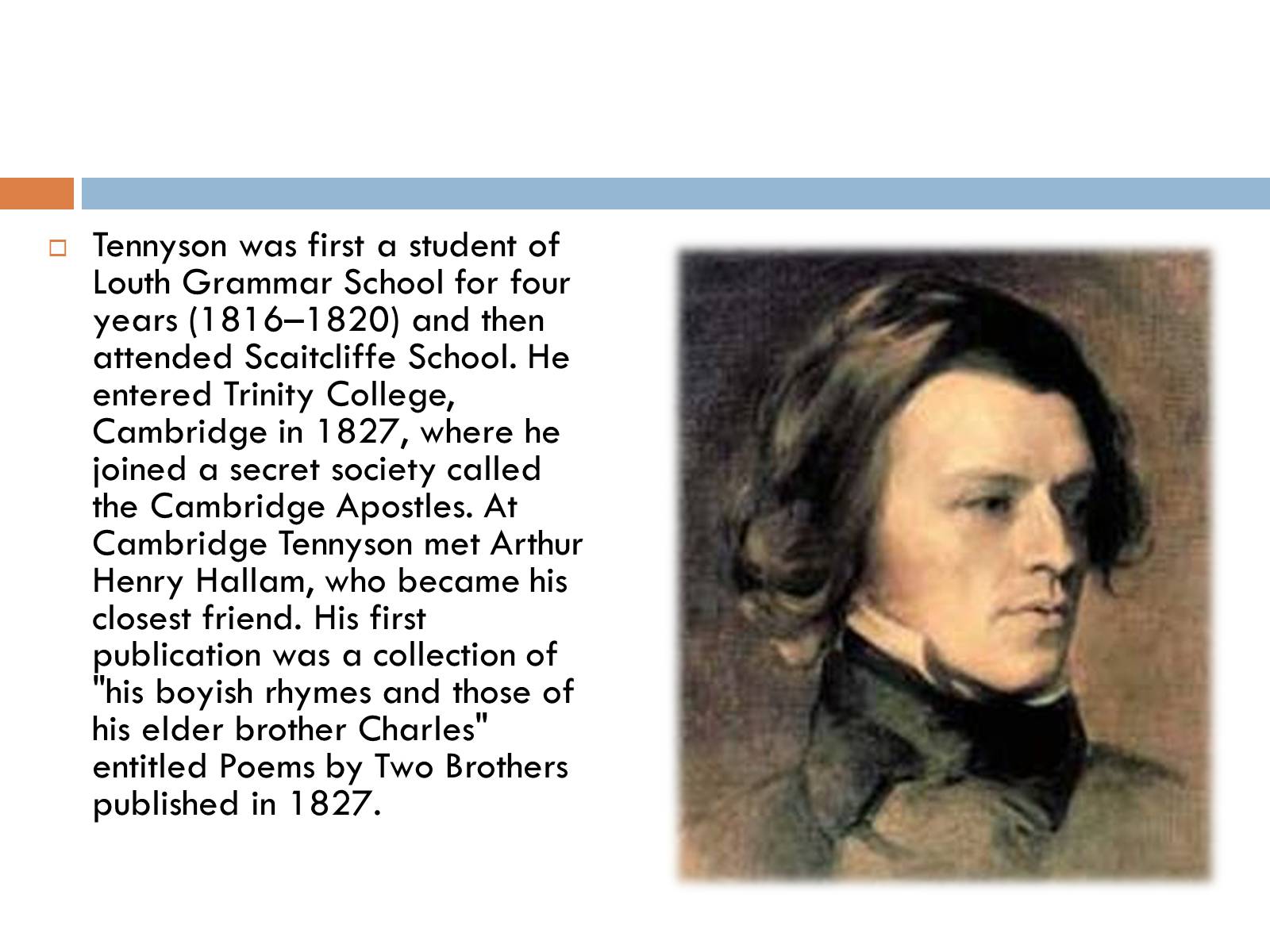
Слайд #6
In 1829, he was awarded the Chancellor's Gold Medal at Cambridge for one of his first pieces, "Timbuctoo".He published his first solo collection of poems, Poems Chiefly Lyrical in 1830. "Claribel" and "Mariana", which later took their place among Tennyson's most celebrated poems, were included in this volume.
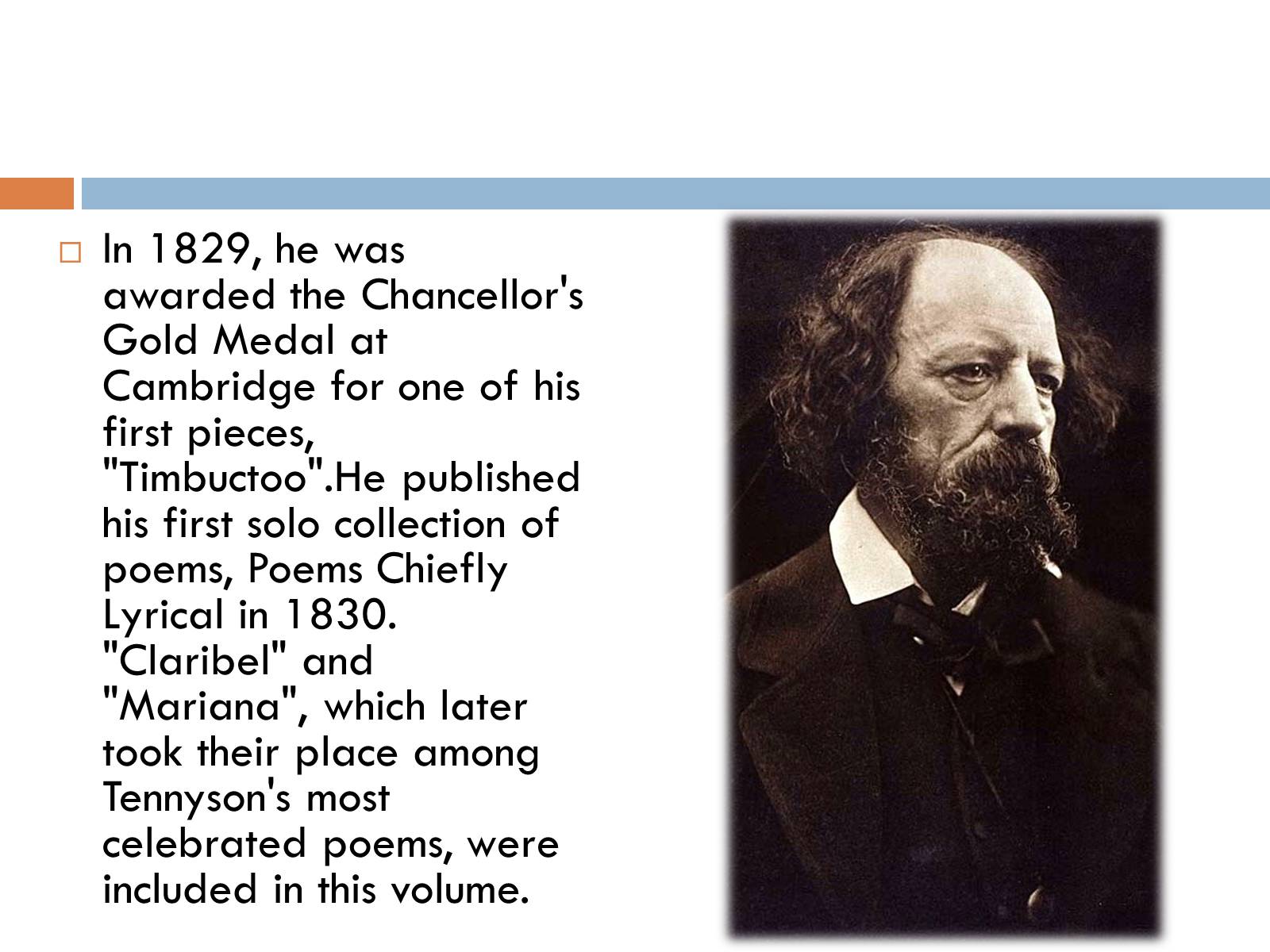
Слайд #7
In the spring of 1831, Tennyson's father died. In 1833, Tennyson published his second book of poetry, which included his well-known poem, The Lady of Shalott.In 1842, while living modestly in London, Tennyson published two volumes of Poems, of which the first included works already published and the second was made up almost entirely of new poems. They met with immediate success.
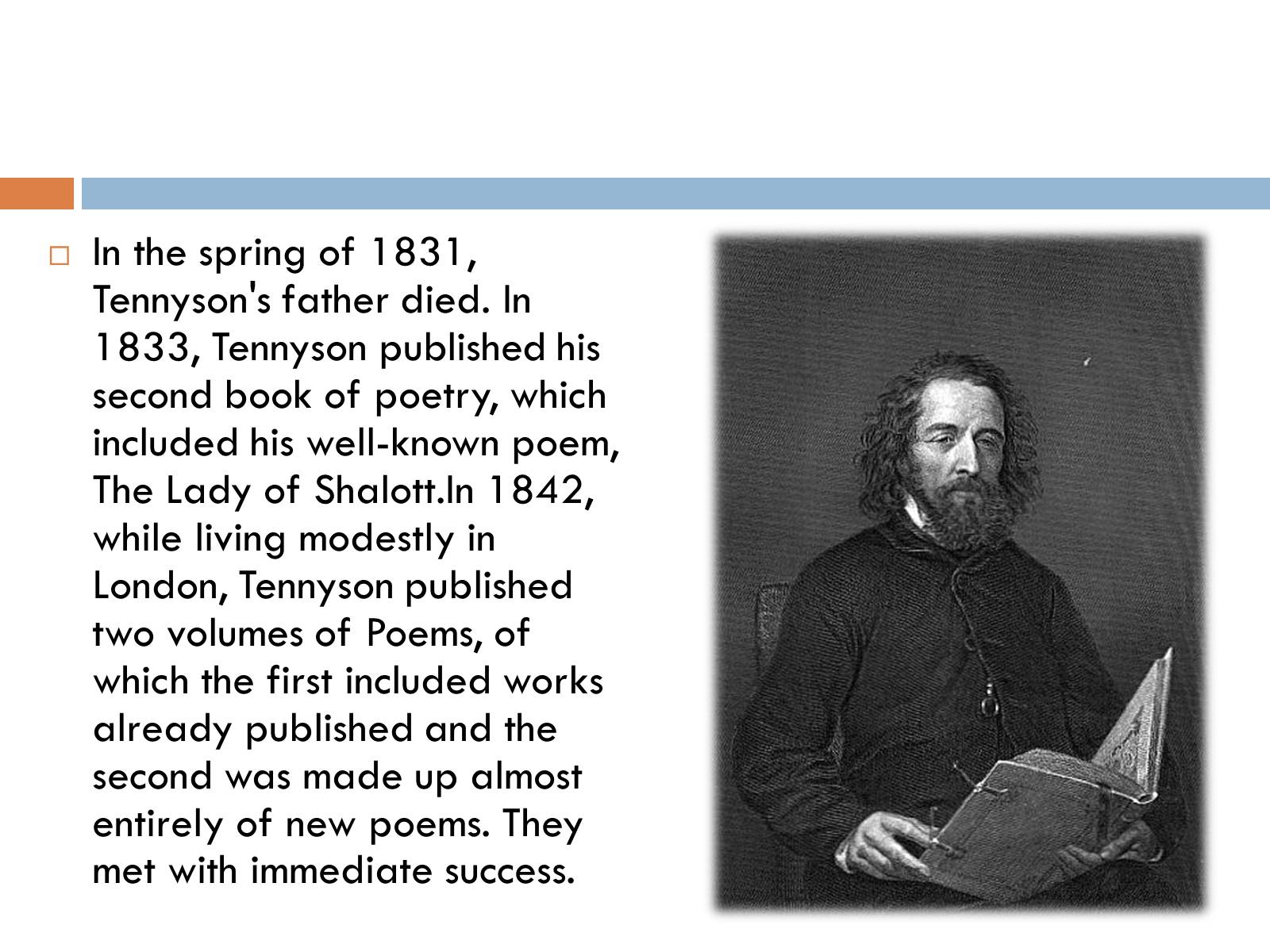
Слайд #8
It was in 1850 that Tennyson reached the pinnacle of his career. Later the same year he was appointed Poet Laureate, succeeding William Wordsworth. In the same year (on 13 June), Tennyson married Emily Sellwood, whom he had known since childhood, in the village ofShiplake. They had two sons, Hallam Tennyson (b. 11 August 1852) – named after his friend – and Lionel (b. 16 March 1854).
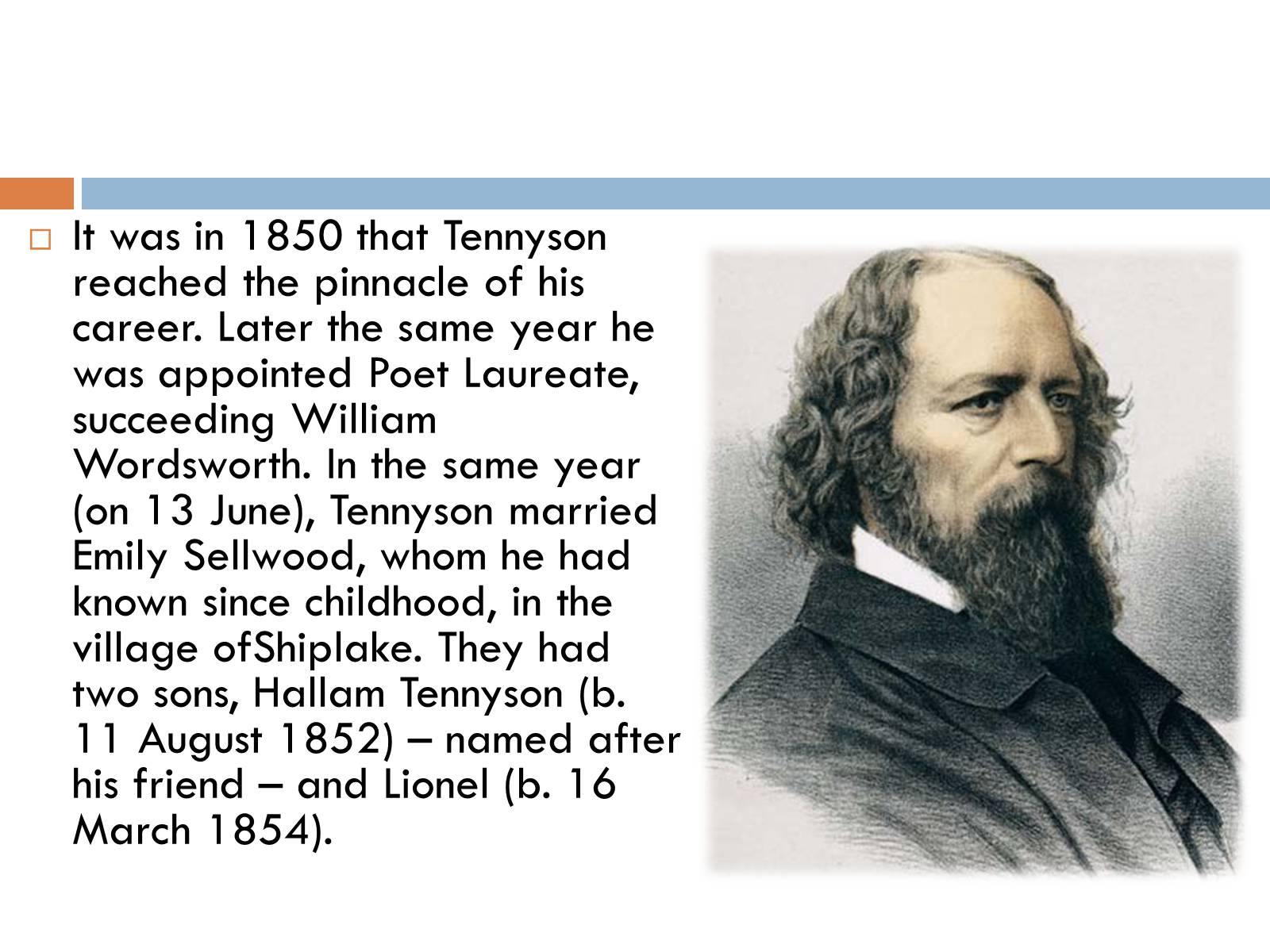
Слайд #9
List of works
The Dying Swan
The Kraken
Mariana
Lady Clara Vere de Vere (1832)
The Lotos-Eaters
The Lady of Shalott (1832, 1842)
The Palace of Art
St.Simeon Stylites (1833)
Locksley Hall
Tithonus
The Two Voices (1834)
"Ulysses" (1833) and other
The Dying Swan
The Kraken
Mariana
Lady Clara Vere de Vere (1832)
The Lotos-Eaters
The Lady of Shalott (1832, 1842)
The Palace of Art
St.Simeon Stylites (1833)
Locksley Hall
Tithonus
The Two Voices (1834)
"Ulysses" (1833) and other
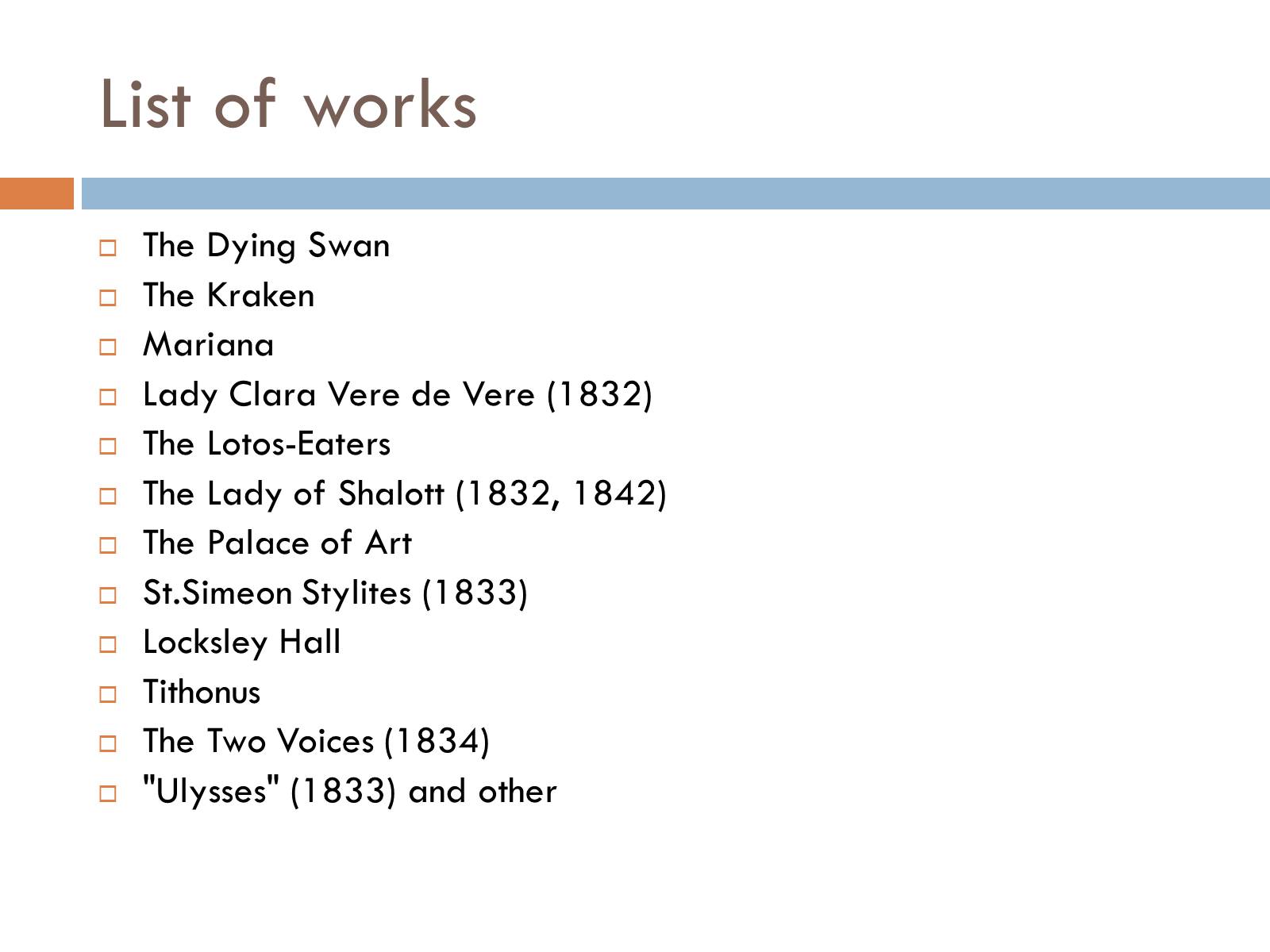
Слайд #10
He died on 6 October 1892 at Aldworth, aged 83. He was buried at Westminster Abbey. A memorial was erected in All Saints' Church, Freshwater. His last words were; "Oh that press will have me now!".
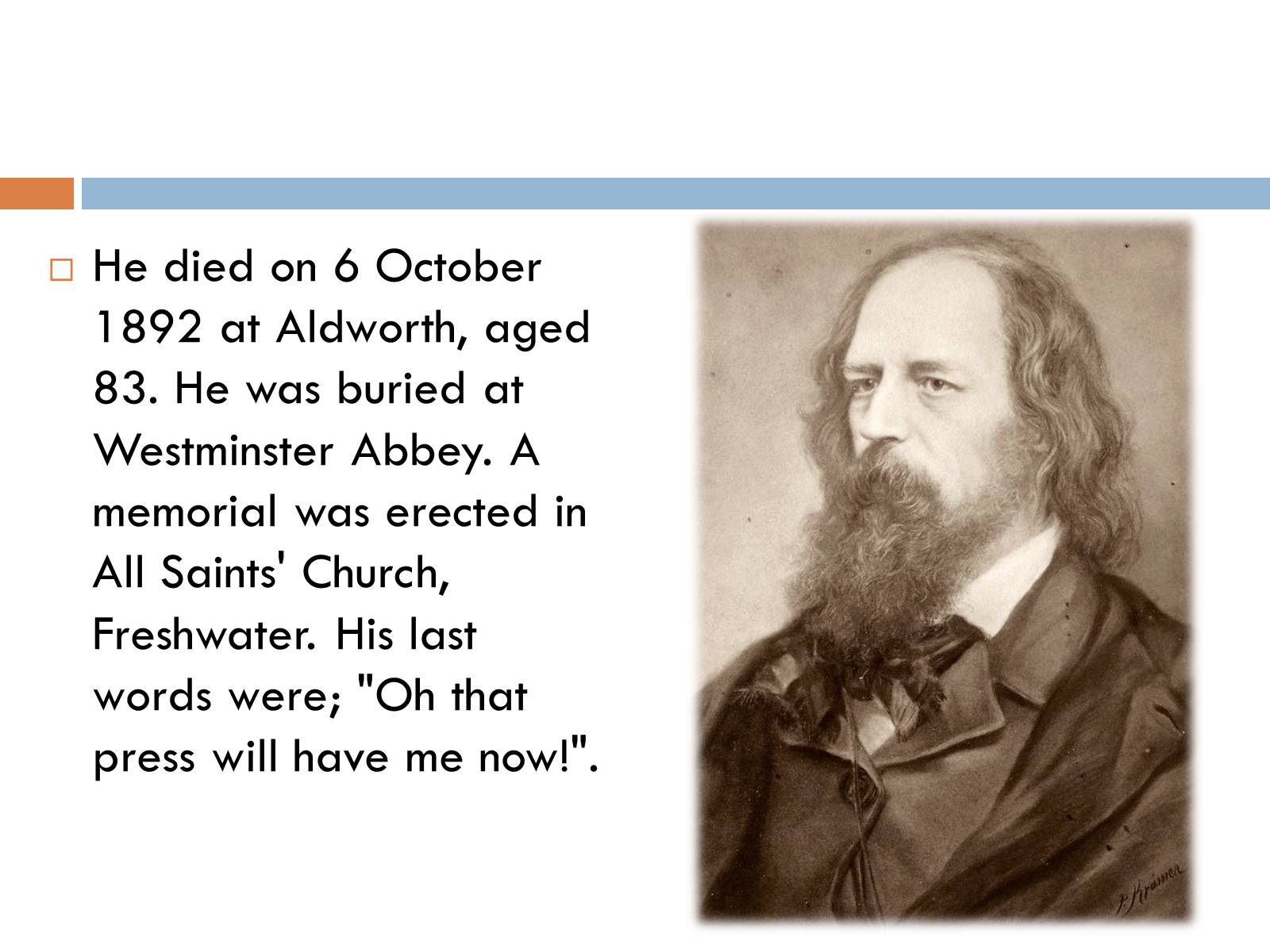
Слайд #11
Made by Kseniya Klimenko10-a
